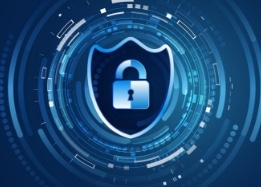I. Introduction
In an age where digital information and operations are the backbone of nearly every business, the importance of cybersecurity can hardly be overstated. As technology evolves, so too do the methods and sophistication of cyber attackers, making it critical for businesses to fortify their digital defenses. This reality brings into sharp focus the concept of a cybersecurity audit—a systematic evaluation of an organization's information system by measuring how well it conforms to a set of established criteria.
A. The Rising Tide of Cybersecurity Significance
The digital landscape is constantly under threat from cybercriminals who exploit vulnerabilities for various malicious ends, including theft, espionage, and sabotage. These threats are not static; they evolve rapidly, exploiting new vulnerabilities and adapting to security measures with alarming speed and ingenuity. As a result, cybersecurity has shifted from being an IT concern to a strategic business imperative. Ensuring the confidentiality, integrity, and availability of information is not just about protecting assets but also about maintaining trust, compliance, and a competitive edge.
B. Definition of a Cybersecurity Audit
A cybersecurity audit is a comprehensive review and analysis of an organization's IT infrastructure, policies, and operations. It aims to identify vulnerabilities, assess the risk levels, and verify compliance with international standards and regulatory requirements. Through this process, businesses can gain invaluable insights into their cybersecurity posture, enabling them to make informed decisions and implement strategic improvements.
II. Understanding Cybersecurity Audit
A. Purpose
A cybersecurity audit is not just a regulatory checkbox but a strategic tool for risk management. Its purpose transcends mere compliance, aiming to provide a holistic view of an organization's security posture, identify gaps, and lay a roadmap for fortified defenses.
B. Different Types of Cybersecurity Audits
i. Internal Audits
Internal audits are pivotal for any organization aiming to fortify its cybersecurity defenses from within. Conducted by the organization's in-house team, these audits serve as a self-assessment tool that mirrors the company's current cybersecurity auditing practices. The primary advantage of internal audits is their ability to offer real-time insights and immediate feedback on the operational effectiveness of security measures. By leveraging intimate knowledge of the organization's systems and processes, internal audit teams can tailor their evaluations to address specific security concerns, ensuring that internal controls are adequate and aligned with the organization's overarching security objectives. For companies like Kumo Cloud Solutions, internal audits are a first line of defense, enabling them to identify and remediate vulnerabilities before external threats exploit them.
ii. External Audits
External audits bring an essential layer of objectivity and expertise to the cybersecurity assessment process. These audits conducted by independent third-party entities provide an unbiased evaluation of an organization's cybersecurity framework, offering a fresh perspective that can uncover hidden vulnerabilities or oversights that internal teams might miss. External auditors apply industry-standard methodologies and best practices to evaluate the effectiveness of security controls, compliance with regulations, and the overall resilience of the cybersecurity posture. For businesses, the insights gained from external audits are invaluable in validating the effectiveness of their cybersecurity strategies and building trust with stakeholders, including customers, partners, and regulators. External audits can also offer strategic guidance on improving security measures and achieving compliance with complex regulatory landscapes, making them crucial for companies like Kumo Cloud Solutions that operate in highly regulated industries.
iii. Regulatory Compliance Audits
In the intricate web of global business operations, regulatory compliance audits are a critical checkpoint for organizations navigating the complex terrain of legal and regulatory obligations. These audits ensure that a company's cybersecurity policies, procedures, and controls meet the stringent requirements set forth by industry-specific laws, standards, and regulations. Compliance audits are not just about avoiding legal penalties for companies like Kumo Cloud Solutions operating in healthcare, finance, or e-commerce sectors; they are a foundational aspect of operational integrity and market credibility. Regulatory compliance audits help organizations systematically verify their adherence to GDPR, HIPAA, or PCI-DSS standards, safeguarding sensitive data, protecting consumer privacy, and ensuring a secure digital environment. By staying compliant, businesses avoid the financial repercussions of non-compliance and strengthen their reputation as trustworthy and fast entities in the digital marketplace.
III. Importance of Cybersecurity Audit for Businesses
i. Protecting Sensitive Data
In today’s data-driven world, protecting sensitive information is paramount. Cybersecurity audits play a crucial role in identifying weaknesses in data protection mechanisms and recommending measures to safeguard critical information from unauthorized access, theft, or damage. For businesses like Kumo Cloud Solutions, which handle vast amounts of customer data, a robust cyber security audit process ensures that sensitive data remains confidential and integral, thereby upholding the company’s commitment to data protection.
ii. Mitigating Cyber Threats and Vulnerabilities
The digital landscape is fraught with threats ranging from ransomware attacks to phishing schemes. Regular audits help businesses proactively identify and assess vulnerabilities within their network and systems. By understanding potential threats, companies can implement strategic defenses to mitigate risks, reducing the likelihood of successful cyber attacks and minimizing potential financial and reputational damage.
iii. Ensuring Compliance with Industry Regulations
Adherence to regulatory standards is more crucial than ever with the growing emphasis on data protection and privacy. Cybersecurity audits verify compliance with industry-specific regulations such as GDPR, HIPAA, or PCI-DSS, ensuring businesses like Kumo Cloud Solutions meet legal obligations and avoid substantial penalties. Compliance protects businesses from legal repercussions and reinforces their reputation as trusted entities in their respective industries.
iv. Maintaining Customer Trust and Reputation
A company’s reputation is closely tied to its cybersecurity posture in the digital age. Regular audits demonstrate a commitment to security and privacy, fostering trust among customers, partners, and stakeholders. For businesses, maintaining customer trust is essential for long-term success and competitiveness.

IV. Key Components of a Cybersecurity Audit
i. Risk Assessment
A comprehensive risk assessment is the foundation of any cybersecurity audit. This involves identifying potential threats to the organization’s digital assets and evaluating the vulnerabilities that these threats could exploit. Risk assessments help prioritize security efforts by highlighting areas of high risk and guiding businesses in allocating resources effectively to protect against identified risks.
ii. Security Policies and Procedures
An audit of security policies and procedures assesses the effectiveness of the existing protocols and whether they are being followed throughout the organization. It involves reviewing the policies related to data protection, incident response, access control, and more. This component ensures that policies are not only up to date with current best practices and compliance requirements but are also effectively implemented and adhered to by all employees.
iii. Access Controls and User Management
Evaluating access controls and user management is crucial to prevent unauthorized access to sensitive systems and data. This audit examines how access rights are granted, managed, and revoked, ensuring that users only have the access necessary for their role (principle of least privilege). It also involves assessing the processes for authenticating and monitoring user activities, which is crucial for detecting and responding to potential security incidents.
V. Steps Involved in Conducting a Cybersecurity Audit
i. Pre-audit Preparation
This initial phase involves defining the scope of the audit, identifying key assets and systems to be evaluated, and assembling an audit team with the necessary expertise. Effective preparation lays the groundwork for a focused and efficient audit process.
ii. Risk Assessment and Planning
Building on the preparatory work, this step involves a detailed risk assessment to identify vulnerabilities and plan the audit procedures. It sets the stage for a targeted approach to evaluating security controls and testing vulnerabilities.
iii. Conducting the Audit
The execution phase is where auditors evaluate security controls, test system vulnerabilities, and assess compliance with relevant regulations. This phase is critical for uncovering gaps in the organization’s cybersecurity defenses.
iv. Reporting and Recommendations
The final phase involves documenting the audit findings and providing recommendations for improvement. This report is vital for decision-makers to understand their cybersecurity posture and take informed actions to enhance security measures.
VI. Common Challenges in Cybersecurity Audits
i. Lack of Resources
Many organizations face challenges in allocating sufficient resources, including budget and skilled personnel, to conduct thorough cybersecurity audits. This can limit the depth and frequency of audits, potentially leaving vulnerabilities to be addressed.
ii. Evolving Cyber Threats
The constant evolution of cyber threats means that what was secure yesterday may not be secure today. Keeping pace with these changes and continuously adapting audit strategies is a significant challenge for businesses.
iii. Rapid Technological Changes
As technology advances, new tools, and systems are constantly introduced into business environments. This rapid change can create new vulnerabilities and make it challenging for audits to cover all technology aspects effectively.
VII. Best Practices for a Successful Cybersecurity Audit
i. Regular and Thorough Audits
Conducting routine and comprehensive cybersecurity audits is critical to identifying and mitigating risks effectively. This practice ensures businesses adapt to threats and maintain a strong cybersecurity posture.
ii. Continuous Monitoring and Updates
Beyond periodic audits, continuous monitoring of the cybersecurity landscape and timely updates to security measures are essential for staying ahead of threats.
iii. Collaboration between IT and Non-IT Stakeholders
Successful cybersecurity audits require collaboration across departments. Engaging non-IT stakeholders ensures that cybersecurity is integrated into all aspects of the business, fostering a culture of security awareness and compliance.

VIII. Conclusion
Cybersecurity audits, such as those conducted by Kumo Cloud Solutions, California, are not merely a procedural necessity but a strategic imperative for businesses in the digital age. They offer a critical lens through which organizations can assess, enhance, and assure the security of their digital assets against an ever-evolving threat landscape. Encouraging a proactive approach to cybersecurity, regular audits are indispensable for securing business operations, safeguarding sensitive data, and maintaining the trust of customers and partners. In the quest for digital resilience, these audits emerge as an essential shield, fortifying businesses against the multifaceted threats of the cyber world. Call us at (949) 333-1080 for more information.
FAQs
FAQ 1: Why are cybersecurity audits more critical now than ever?
A: With the digital transformation of businesses accelerating at an unprecedented pace, the complexity and volume of cyber threats have also surged. Cybersecurity audits are crucial in this era because they identify vulnerabilities and gaps in the security posture and ensure that businesses comply with evolving regulations. This proactive approach protects against data breaches and maintains customer trust in an increasingly interconnected world.
FAQ 2: How often should a business conduct a cybersecurity audit?
A: The frequency of cybersecurity audits can vary depending on several factors, including the business size, the nature of data handled, and the industry's regulatory landscape. However, as a best practice, businesses should aim for at least an annual audit to ensure their security measures are current. More frequent audits may be necessary for industries facing higher firms or risks undergoing significant IT infrastructure or business operations changes.
FAQ 3: Can small businesses benefit from cybersecurity audits just as much as giant corporations?
A: Absolutely. Cybersecurity threats do not discriminate based on the size of a business. Small businesses often face the same cyber risks as big corporations but may lack the resources for extensive security measures. Conducting cybersecurity audits can help small businesses identify the most critical vulnerabilities, allowing them to allocate their limited resources more effectively and improve their overall security posture.


You must be logged in to post a comment.